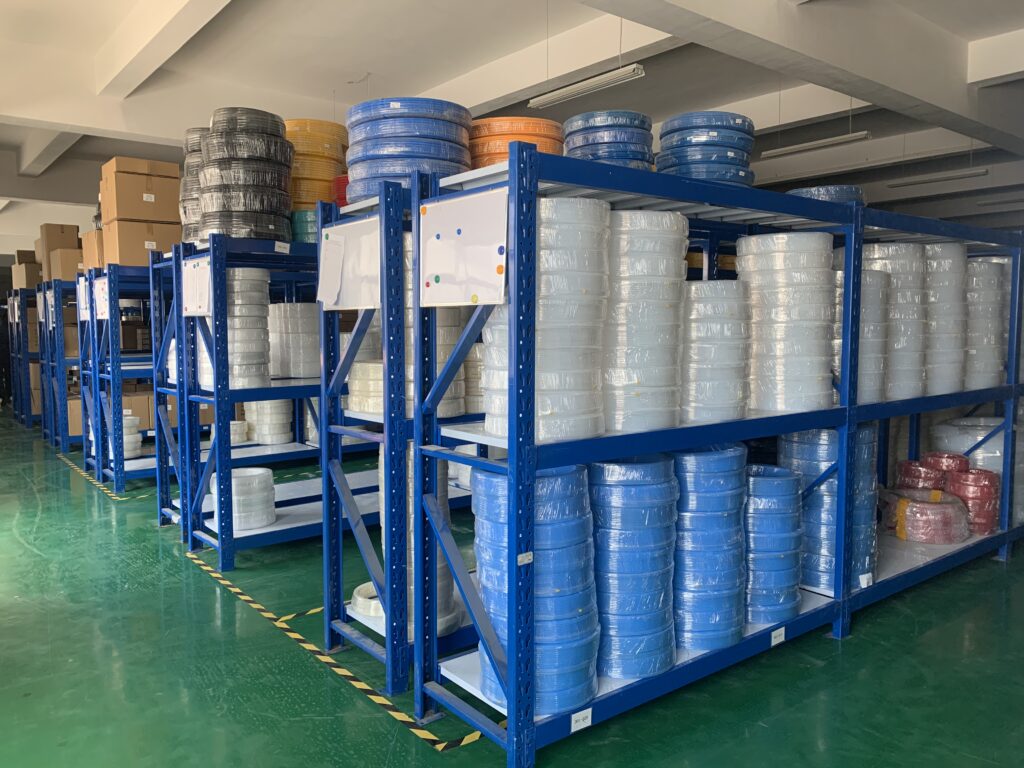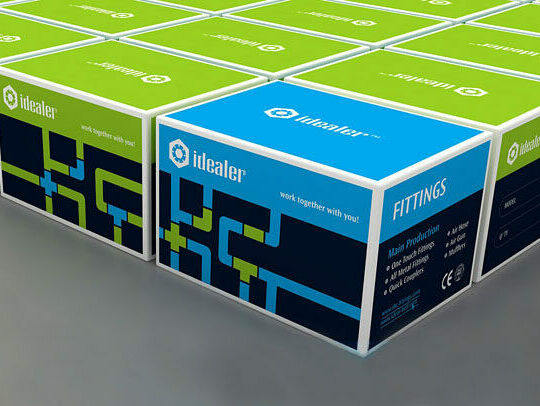Introduction
Pneumatic fittings and tubing are essential components of pneumatic systems used in various industries, including manufacturing, automotive, and construction. Proper storage and handling of these components are crucial to the performance and safety of the entire system. Failure to store and handle pneumatic fittings and tubing properly can lead to various consequences, including leaks, reduced performance, and even system failure. In this article, we will discuss the importance of proper storage and handling of pneumatic fittings and tubing, as well as the potential consequences of improper storage and handling.
Storage
Proper storage of pneumatic fittings and tubing is essential to prevent damage and ensure their longevity. Here are some tips for proper storage:
Ideal storage conditions
Store pneumatic fittings and tubing in a cool, dry place away from direct sunlight, moisture, and extreme temperatures. This will help prevent corrosion and damage to the fittings and tubing.


Proper labeling and organization
Label and organize fittings and tubing according to size, type, and application to prevent confusion and ensure easy access. This will save time and effort when searching for specific fittings and tubing.


Protective covers or packaging
Use protective covers or packaging to prevent damage to fittings and tubing during storage and transport. This will help prevent scratches, dents, and other damage that can occur during handling and transport.


By following these simple guidelines, you can ensure that your pneumatic fittings and tubing are stored properly and remain in good condition for use.
Handling
Proper handling of pneumatic fittings and tubing is essential to prevent damage and ensure their performance. Here are some tips for proper handling:
Proper handling techniques: Handle pneumatic fittings and tubing gently to prevent damage. Avoid excessive force or bending, and handle them with care during installation and removal.
Using the right tools: Use the appropriate tools for installation and removal of fittings and tubing to prevent damage. Using improper tools can cause damage to the fittings and tubing.

Inspecting fittings and tubing: Inspect fittings and tubing for damage, such as cracks or dents, before use. Using damaged fittings and tubing can cause leaks and other issues that can damage your pneumatic system.

By following these simple guidelines, you can prevent damage to your pneumatic fittings and tubing and ensure their optimal performance. Remember to handle fittings and tubing gently, use the right tools, and inspect them for damage before use.
Maintenance
Regular maintenance of pneumatic fittings and tubing is essential to ensure their longevity and optimal performance. Here are some tips for proper maintenance:
- Regular inspection and cleaning: Inspect fittings and tubing regularly for signs of wear or damage and clean them as needed. Regular inspection and cleaning can help prevent contamination and damage to your pneumatic system.
- Lubrication: Apply a small amount of lubricant to fittings to prevent damage and leaks. Lubrication can help prevent damage to fittings and tubing during installation and removal.
- Replace damaged or worn components: Replace damaged or worn fittings and tubing immediately to prevent system failure. Using damaged or worn components can cause leaks and other issues that can damage your pneumatic system.
- Proper disposal: Dispose of damaged or worn components properly to prevent environmental damage. Improper disposal can harm the environment and cause health hazards.

By following these simple guidelines, you can ensure the longevity and optimal performance of your pneumatic fittings and tubing. Remember to inspect and clean them regularly, lubricate them as needed, replace damaged or worn components immediately, and dispose of them properly.
Training
Proper training of employees on proper storage and handling techniques is essential to prevent damage and ensure the safety of your pneumatic system. Here are some tips for proper training:
Importance of proper storage and handling: Emphasize the importance of proper storage and handling of pneumatic fittings and tubing to employees. Explain how improper storage and handling can damage the components and cause system failure.
Providing resources and guidelines: Provide employees with resources and guidelines for proper storage and handling. This can include manuals, videos, or training sessions that explain how to properly store and handle pneumatic fittings and tubing.
Regular training and refresher courses: Provide regular training and refresher courses to employees to ensure they are up-to-date on proper techniques and guidelines. This can help prevent accidents and ensure the safety of your employees and your pneumatic system.
By providing proper training to employees, you can ensure the safety and optimal performance of your pneumatic system.
Conclusion
In conclusion, proper storage and handling of pneumatic fittings and tubing are essential to the performance and safety of your pneumatic system. Failure to store and handle these components properly can lead to various consequences, including leaks, reduced performance, and even system failure. Remember to store fittings and tubing in a cool, dry place, handle them gently, inspect and maintain them regularly, dispose of damaged or worn components properly, and provide proper training to employees. Encourage your team to implement these proper storage and handling techniques for optimal performance and safety of your pneumatic systems.

